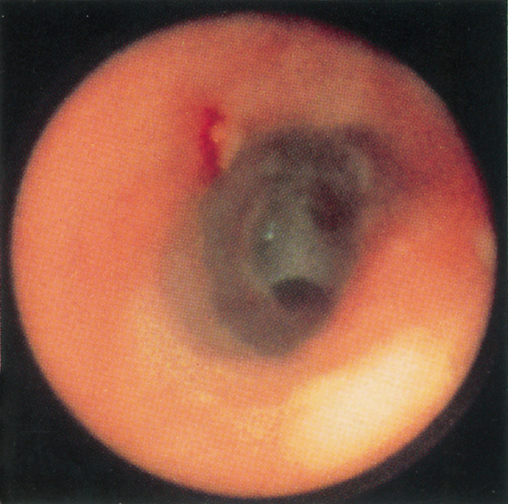 MONTREAL ? Autism and related developmental disorders may, in the coming years, be diagnosed in children as young as one year old using magnetic resonance imaging (MRI), says an Israeli scientist. Prof. Ilan Dinstein
MONTREAL ? Autism and related developmental disorders may, in the coming years, be diagnosed in children as young as one year old using magnetic resonance imaging (MRI), says an Israeli scientist. Prof. Ilan Dinstein
Ilan Dinstein of the Weizmann Institute of Science is leading a study that is scanning the brains of sleeping toddlers from as young as 12 months to close to four years.
Dinstein was a guest speaker at an event organized by Weizmann Canada to raise awareness of research at the institute and how it is benefiting humanity. ?I am positive that within five years, there will be a biological assessment of autism, which will revolutionize the way it is diagnosed,? Dinstein said.
The researchers have found differences between the hemispheres of the brains of these toddlers, which they think is a predictor of autism.
In infants thought susceptible to autism, there is a lack of synchronicity in the communication between the two halves of the brain. the stronger the synchronicity between the hemispheres, the better the language skills, and vice versa, he said.
He believes that MRIs will show a brain abnormality in more than 70 per cent of children with autism.
The Weizmann scientists, who are working in collaboration with the University of California at San Diego, are studying sleeping toddlers because they are too young to hold still in the scanner or follow instruction, as older, awake subjects can.
The brain remains active during sleep, and that activity can be observed with an MRI as blood flows to the parts of brain where there is neural activity. all systems, such as the visual, auditory and motor, are functioning during sleep, he said.
The ability to detect asymmetry in such young brains could one day be an important diagnostic tool, and behavioural or possibly pharmaceutical therapy could begin at a much earlier age than is now possible, he said.
Observable physical evidence, something that is missing at present in autism, would also allow more accurate diagnosis, Dinstein said.
The finding is significant because it confirms that there is a biological explanation for autism.
Dinstein, who received a PhD in neuroscience at New York University, has been a postdoctoral fellow at Weizmann since 2009.
Autism is a vague term and understanding of the disorder remains unclear, he said. ?If you ask psychologists what it is, you will never get a straight answer.?
However, there is common agreement that it has three general characteristics: language difficulties, poor social interaction, or repetitive behaviour, but, he added, that these vary widely among individuals and can be unreliable indicators.
What is certain is that the incidence of autism is soaring, he said. ?Thirty years ago, it was about one in 5,000. Today, at least in the U.S. it?s something like one in 110,? he said.
Part of the reason is more recognition and a broader definition including Asperger?s syndrome, where language is not usually an issue, and ?pervasive developmental disorders,? which, according to Dinstein, is a catch-all term professionals use when they really don?t know what?s wrong.
Dinstein is convinced autism is a brain disorder, and that this may explain why some people with autism overreact to sensory information such as light or sound, either avoiding it or becoming fixated on it, he said.
It is also now known that genetics plays a part, and about 100 genes so far have been identified that are linked to autism. Scientists can induce symptoms in mice comparable to autism by injecting them with mutated gene material, he added.
?We are born with more neurons than we need,? he explained. ?In the first three years of life, a pruning process takes place.? it is suspected that autism may result when these excess neurons do not die off in the early maturation of the brain.
In time, Dinstein hopes this sensory aspect of autism will also be isolated on brain scans, making it more treatable. he thinks that sensory disorder should be considered a fourth general characteristic of autism.
The cost effectiveness of mass brain scanning of infants is an issue, he admits, and less expensive methodology may have to be used in the future.
Dinstein did affirm that no link exists between vaccinations against common childhood diseases and autism, a theory first published in 1998 by a research group in the Lancet. That British medical journal retracted the article last year.
?That scare has been entirely refuted by the scientific community,? Dinstein said. part of the theory was based on the presence of mercury in the vaccine for measles, mumps and rubella, but in some countries, no mercury is used and the rate of autism is the same, he said.
?Unfortunately, [not taking the vaccine] has caused a resurgence of diseases we have not seen for decades, even some deaths.?
Dr. Phil Gold, the event?s moderator, observed that people with autism have made major contributions to the world, especially in science and music.
?Without the autistic trait, we would still be living in caves? anything good has come from the ability to lock out society a little bit.?
Gold, a professor of medicine at McGill University and a Canadian Medical Hall of Fame laureate, has a long history of professional collaboration with Weizmann, and a chair in cancer research was established there in his name. he also condemned the vaccine-autism theory as ?outlandish,? noting that the principle author?s licence has been suspended.